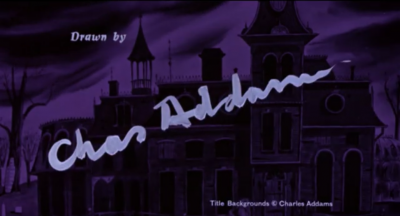Bayeux Tapestry as the first-ever comic strip
The Bayeux Tapestry is considered one of the most famous and recognisable historical documents in history. Sprawled out across nearly 70 metres of fabric, in stunning detail, is an entire catalogue of the past.

As well as offering future generations a full-bodied window into military, social and cultural history, it might just qualify as the first-ever comic, and a cursory glance at the Tapestry will confirm as much. Big text looms above battle scenes as supplementary commentary. While it might be in Latin and lack the comedic value of Dennis the Menace and cartoonish speech bubbles, it’s one of the earliest examples of text used to explain a scene’s significance. This is essentially what leads historians to consider it a pioneering example of sequential art.
Poppy Burton at Far Out discusses the premise. Wikipedia breaks it down.
**********
An Obscure Syndicate: Madison Features Service
We love H.T. Elmo here at Stripper’s Guide, not because he was a great cartoonist … because he wasn’t … but for his enduring and unassailable belief that there was some way to cadge a living from all those weekly newspapers published in the country.

In 1949 Elmo came up with a new and unusual concept for a weekly feature syndicate. Rather than try to get money out of the newspaper owners (a task akin to panning for gold in your bathtub water) he would offer his cartoons for free, with the very small caveat that in exchange for using the cartoons the newspaper would give him a little ad space. A barter system.
We love Allan Holtz here at The Daily Cartoonist for his ability to find and catalogue comic strip obscurities.
**********
The first Peanuts ads?
A series of eight ads for Connecticut Blue Cross ran in newspapers during 1958. By 1958, Peanuts had been used in various commercial ways, like Peanuts books and toys and to illustrate the somewhat promotional guide The Brown Book of Picture-Taking (1955). And of course it had been used to advertise Peanuts things, like the fact that a newspaper is running the Peanuts strip. However, off the top of my head I can’t think of any earlier examples of Peanuts being used in advertisements for a non-Peanuts product (or, in this case, a service.)

Nat Gertler discovers what may be the earliest Peanuts advertisements.
**********
First & Last…Chon Day at The New Yorker
Most cartoonist’s styles begin one way and end another (there’re exceptions, always exceptions!). Case in point in the change column is Chon Day. His first New Yorker cartoon below, published in 1931, looks nothing like his last, published in 1998.

Michael Maslin presents famed cartoonist Chon Day‘s first and last New Yorker cartoons.
**********
Revisiting Trenton Newspaper Cartoonists
Sometimes all the news that matters is the news that brightens up a day, and no news reporter does it better than the cartoonists who know how to encapsulate a thousand sly words of wit into a single image.
Some past communication with Trenton Free Public Library Trentonian archivist Laura Poll brought up the thought of several Trenton Times cartoonists who have brightened up our times and are worth remembering.



Dan Aubrey at U.S.1 profiles Trenton cartoonists William Pedrick, Ralph Schlegel, and Frank Tyger.
**********
Flash Gordon Guest Artists
The gallery [shows] the spectacular guest artists I had on my run of Flash Gordon. A brief bio of each cartoonist is listed in the top tier of each strip.

Jim Keefe presents a gallery of George Evans, Al WIlliamson, Loston Wallace, Michael Gilbert , Joe Kubert , John Romita, Mark McMurray, Brian Bilter, and Patrick McDonnell drawing Flash Gordon pages.
**********
The Dark Old House (1963) – title sequence by Charles Addams

Thanks for the shout out on the Flash Gordon pages. Great fun being able to spotlight all those fantastic artists.